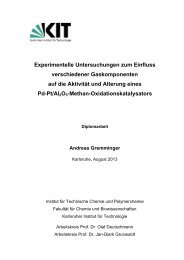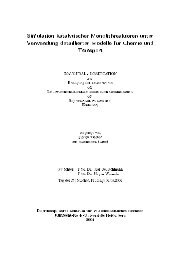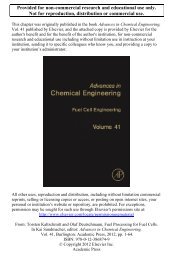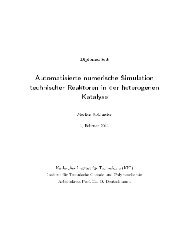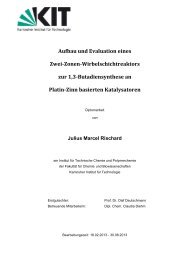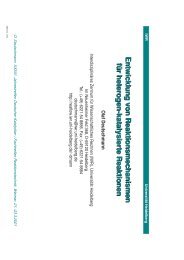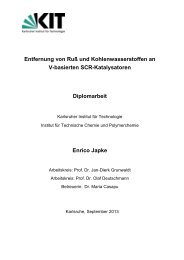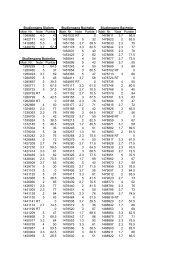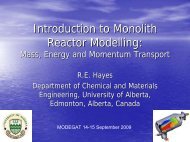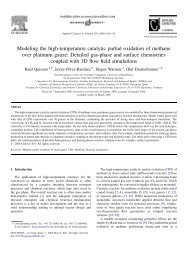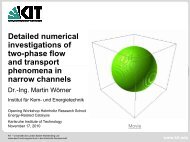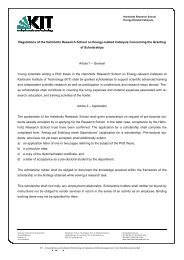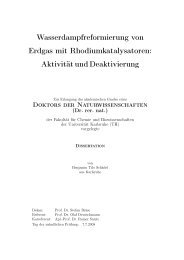SOFC Modeling - From Micro-Kinetics to Stacks - KIT
SOFC Modeling - From Micro-Kinetics to Stacks - KIT
SOFC Modeling - From Micro-Kinetics to Stacks - KIT
Create successful ePaper yourself
Turn your PDF publications into a flip-book with our unique Google optimized e-Paper software.
A0201 – Abstract A021 – Oral Presentation – Session A02 – <strong>Modeling</strong> Sesson – Tuesday, July 1, 2008 – 11:00 h<br />
H 2 Oxidation<br />
Activation energy (kJ/mol) 89.4<br />
Pre exponential fac<strong>to</strong>r (mol/cm-s) 8.5x10 -2<br />
Coverage dependent activation energy for H (kJ/mol) -10.0<br />
Coverage dependent activation energy for H2O (kJ/mol) -30.0<br />
CO Oxidation<br />
Activation Energy(kJ/mol) 60.0<br />
Pre exponential (mol/ cm-s) 4.00x10 -4<br />
Coverage dependent activation energy for CO(kJ/mol) -10.0<br />
Order dependency on CO 2 coverage 4<br />
O 2 Reduction<br />
Activation energy (kJ/mol) 120.0<br />
Pre exponential (mol/cm-s) 1.5x10 -2<br />
Comparison between the simulated curve and the experimentally observed one for pure<br />
H 2 operated cell is shown in Fig. 3. The model predicts higher peak power density<br />
compared <strong>to</strong> the experimental observation. Experimentally peak power density of 1.61<br />
W/cm 2 is observed at 3.22 A/ cm 2 , while, the simulation yield 1.81 W/ cm 2 at 3.46 A/ cm 2 .<br />
Although it is quite possible <strong>to</strong> reproduce the same experimental observation<br />
quantitatively, we did not resort <strong>to</strong> that since the fitted parameters adversely affected the<br />
model prediction on the performance on reformate fuel compositions.<br />
Figure 3: Comparison of model prediction with cell performance on pure H2.<br />
Figures 4(a) and 4(b), display the experimentally observed and simulated performance<br />
curves, respectively, for a cell operated with the reformate fuel resulting from the partial<br />
oxidation of methane using air. The details of fuel composition are given in [2].<br />
Experimentally CH4:air ratio of 60:20 gave the best performance with a limiting current of<br />
~4.0 A/cm 2 . The simulations lead <strong>to</strong> a limiting current of ~3.25 A/ cm 2 for the same fuel<br />
composition. For CH4:air ratio of 40:100 the simulations predicted a limiting current of<br />
~2.08 A/ cm 2 , while the experimentally observed value is ~2.5 A/cm 2 . In general the<br />
limiting currents are slightly under predicted by the simulations, and the peak power<br />
densities are predicted within a relative error of ~14%.<br />
7



